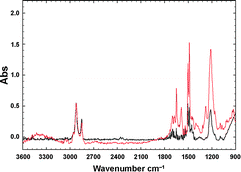Interactions of ozone with organic surface films in the presence of simulated sunlight: impact on wettability of aerosols
Abstract
Heterogeneous reactions between organic films, taken as proxies for atmospheric aerosols, with

* Corresponding authors
a Université de Lyon, Lyon, F-69626, France, Université Lyon 1, Lyon, F-69626, France, CNRS, UMR5256, IRCELYON, Institut de Recherches sur la Catalyse et l’Environnement de Lyon, Villeurbanne, France
b Universités d’Aix-Marseille I, II, III - CNRS, UMR 6264: Laboratoire Chimie Provence, Equipe Instrumentation et Réactivité Atmosphérique, Case courrier 29, 3 place Victor Hugo, Marseille Cedex 03, France
c Atmospheric Chemistry Research Laboratory, BayCEER, University of Bayreuth, Dr.-Hans-Frisch-Str. 1-3, Bayreuth, Germany
d CEQUINOR (UNLP-CONICET) and Laboratorio de Servicios a la Industria y al Sistema Científico (UNLP-CIC-CONICET), Departamento de Química, Facultad de Ciencias Exactas, Universidad Nacional de La Plata, 47 esq. 115, La Plata, Argentina
Heterogeneous reactions between organic films, taken as proxies for atmospheric aerosols, with

 Please wait while we load your content...
Something went wrong. Try again?
Please wait while we load your content...
Something went wrong. Try again?
L. Nieto-Gligorovski, S. Net, S. Gligorovski, C. Zetzsch, A. Jammoul, B. D’Anna and C. George, Phys. Chem. Chem. Phys., 2008, 10, 2964 DOI: 10.1039/B717993F
To request permission to reproduce material from this article, please go to the Copyright Clearance Center request page.
If you are an author contributing to an RSC publication, you do not need to request permission provided correct acknowledgement is given.
If you are the author of this article, you do not need to request permission to reproduce figures and diagrams provided correct acknowledgement is given. If you want to reproduce the whole article in a third-party publication (excluding your thesis/dissertation for which permission is not required) please go to the Copyright Clearance Center request page.
Read more about how to correctly acknowledge RSC content.
 Fetching data from CrossRef.
Fetching data from CrossRef.
This may take some time to load.
Loading related content
